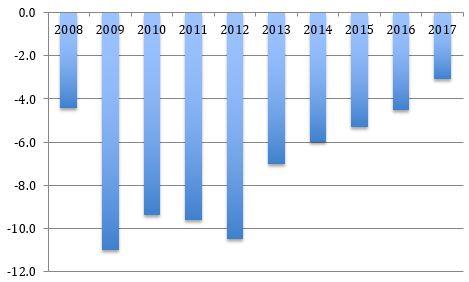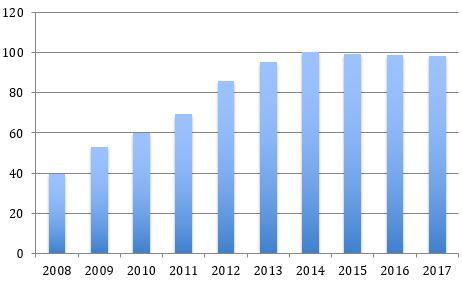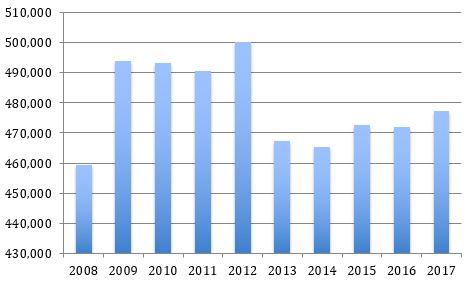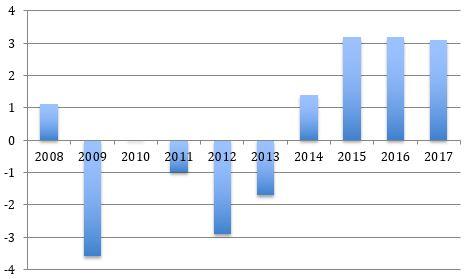Rather Than Paying Down Debt In Good Times, Spain Is Now Spending Even More – Analysis
By MISES
By Philipp Bagus*
For the first time after the financial crisis the Spanish Government in 2017 has made it (barely) to the 3% of GDP limit on public deficits as established by the Stability and Growth Pact. The new socialist government believes that it is time to change course now. According to its view after long years of austerity, it is now time to think about increasing government spending. Indeed, the former government already announced an increase in public pensions by 1.6%. The increase in pensions is highly problematic because demographic factors make the public pensions system unsustainable in the long run. The new government wants to maintain the public pension system by aggressively raising taxes. Furthermore, it wants to undo and change parts of the labor market reform of 2012 that permitted a substantial fall in unemployment. It plans to increase the minimum wage.
What is most problematic in the government´s narrative is that it is actually not true that the government has been austere after the financial crisis. Most significantly, government finances have not been stabilized.

First of all, the Stability and Growth Pact has been sharpened and substituted by the Fiscal Stability Treaty of 2012 (also called European Fiscal Compact ). Before the Fiscal Stability Treaty governments could run deficits at the 3% ceiling during times of economic expansion. When a recession hit, a government could blame the increase in the deficit on extraordinary adverse circumstances. Indeed, in the depth of the financial crisis, all Eurozone member states surpassed the 3% deficit limit. Therefore, the idea of the Fiscal Stability Treaty is that governments run a balanced budget over the course of the business cycle. Deficits are allowed to rise to 3% in a harsh recession, but these deficits must be compensated by surpluses during economic expansion. In normal times the budget should be balanced. The Fiscal Stability Treaty considers a budget of -0.5% still as balanced (or of -1% for countries with a debt to GDP ratio below 60%). Moreover, the Fiscal Stability Treaty entails a debt break. If a country has a debt-to-GDP ratio higher than 60%, the government shall reduce the excess over 60% by 5% per year. For Spain, this did imply a debt reduction of 1.9% (0.05*39) in the year 2017 which was not achieved because the public debt fell only 0.7%.
As Spain is one of the fastest growing economies in the Eurozone, it surely should run a budget surplus according to the law. Hence, running a deficit of 3.1% is neither a great achievement nor a pretext to increase government spending. By not adhering strictly to the rules and using loopholes in the Fiscal Stability Treaty, the Treaty is damaged and will prove to be less suitable to limit government expenditure and deficits in the future. Why should other governments comply if Spain does not strictly fulfill the agreement?

Second, Spain did not reduce its deficit due to government austerity. Indeed, the Spanish government was not austere. It boosted its spending at the beginning of the crisis and cut it substantially only in 2013 when its ESM creditors demanded so in exchange for the 2012 bailout. Since then, government spending has been on the rise and is today still way above the unsustainable levels of 2008. It is bound to increase further.
Spain made it to the 3% limit because of extraordinary and unique circumstances beyond its control. First, the economy has been growing robustly for already 4 years. The past three years real growth stood above a solid 3 percent. Government revenues have increased and expenditures have fallen, because unemployment fell (also due to new labor market flexibility that the new government wants to get rid of). Rising sales, wages and profits resulted in higher tax revenues.

Alarmingly, housing prices and activity is soaring again leading to higher revenues, which the government is eager to spend just as in the last bubble. In addition, the Spanish government got assistance by the ECB with its zero interest rate policy and public sector purchase program. If interest rates return to more normal levels, the Spanish government will slide into trouble.
How would Spanish government finances look like with more normal interest rates? With a government debt of 98.3% of GDP, and assuming average interest rates on government bonds 3% higher than today, the public deficit would increase from 3.1% to 6%.
If Spain can only make it to the 3% limit on deficits in a world of zero interest rates and an economic expansion that feels more and more as a déjà-vu of the last bubble, what will happen in the next recession and or when interest rates rise?

The Spanish structural deficit is still unsustainable. Its public debt is near 100% of GDP and has stagnated despite of the economic expansion. Instead of thinking of ways how to spend the rising government revenues, the Spanish government should exploit this unique opportunity to gets its house in order and reduce its public debts aggressively by running surpluses. Instead of increasing spending and taxes, the government should cut them, in order to prepare for the next storm, which will come sooner or later.
It may well be the last chance for the Spanish government to get its finances sustainable. This chance has been bought by the ECB on costs of Eurozone savers. It is irresponsible to squander it.
What is true and necessary for Spain applies also to other overindebted Eurozone countries such as Portugal, France or Italy. The reduction of government debts during the “good” times would take pressure from the ECB to continue with its dangerous monetary policy that sows the seeds for the next financial crisis. In order to escape from the zero interest trap, government debt levels must be reduced quickly. Now is the moment. When the next recession hits, it will be too late.
About the author:
*Philipp Bagus is an associate professor at Universidad Rey Juan Carlos. He is an associated scholar of the Mises Institute, an IREF Scholar, and the author of numerous books including In Defense of Deflation, Blind Robbery!, The Tragedy of the Euro, and is coauthor of Deep Freeze: Iceland’s Economic Collapse.
Source:
This article was published by the MISES Institute.

